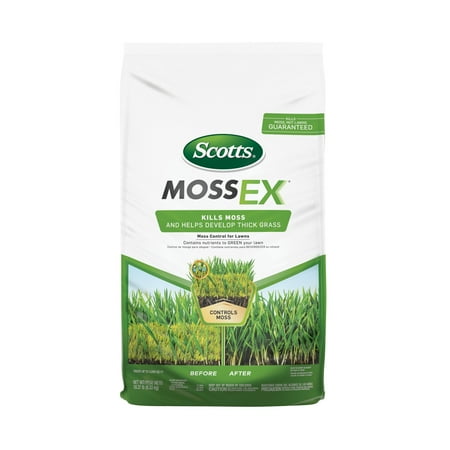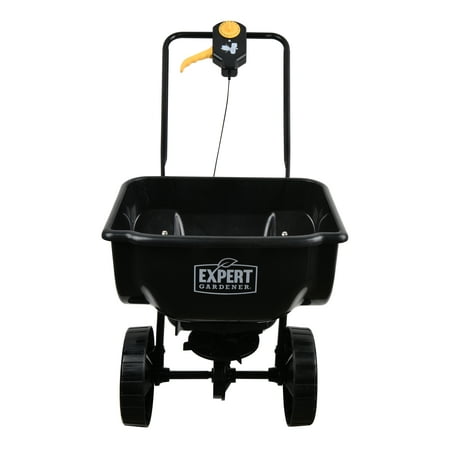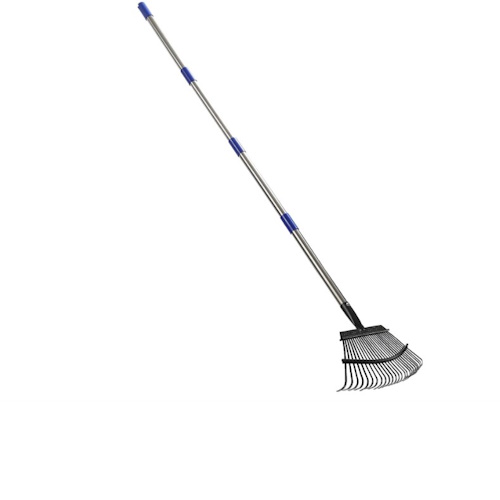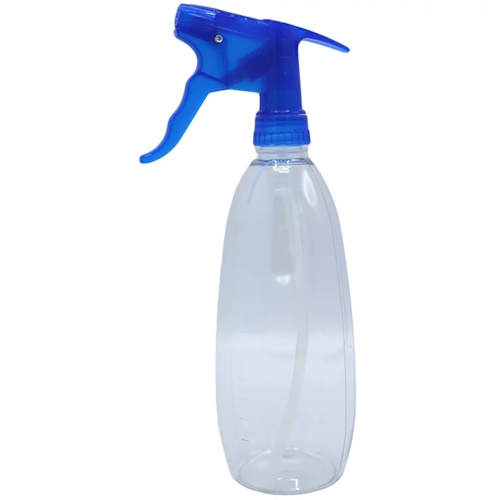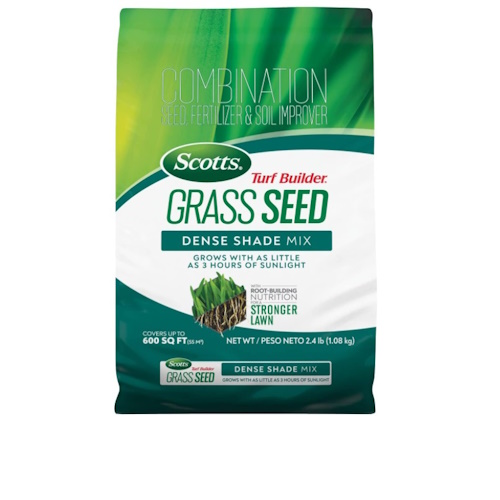6 expert-approved ways to successfully get rid of moss in your lawn
The presence of moss can be a common lawn issue but discover expert tips for how to combat it

Rachel Bull
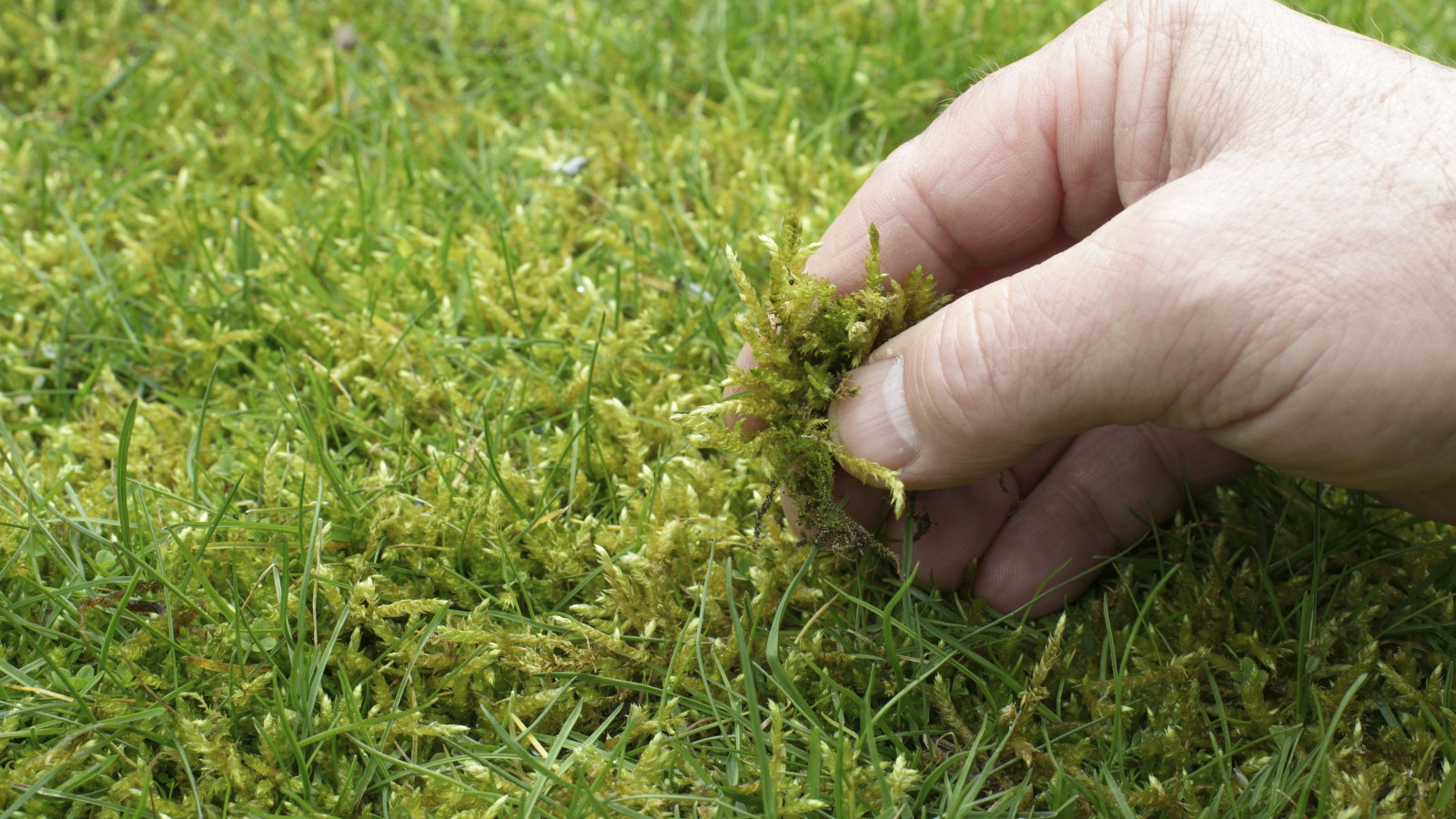
Moss growing in lawns is a common gardeners' woe, particularly for those who pride themselves on pristine turf. Lawn maintenance takes a lot of time, so patches of an unexpected plant popping up can make all that hard work seem in vain.
Moss is a sign that the conditions aren't quite right for grass to thrive. The resulting uneven look can be frustrating – but the problem can be fixed.
Applying a commercial moss killer is one go-to method, but it certainly is not the only one. If you'd rather adopt a more eco-friendly approach, there are alternative lawn care methods to eradicate the moss and get your grass looking green and thick again.
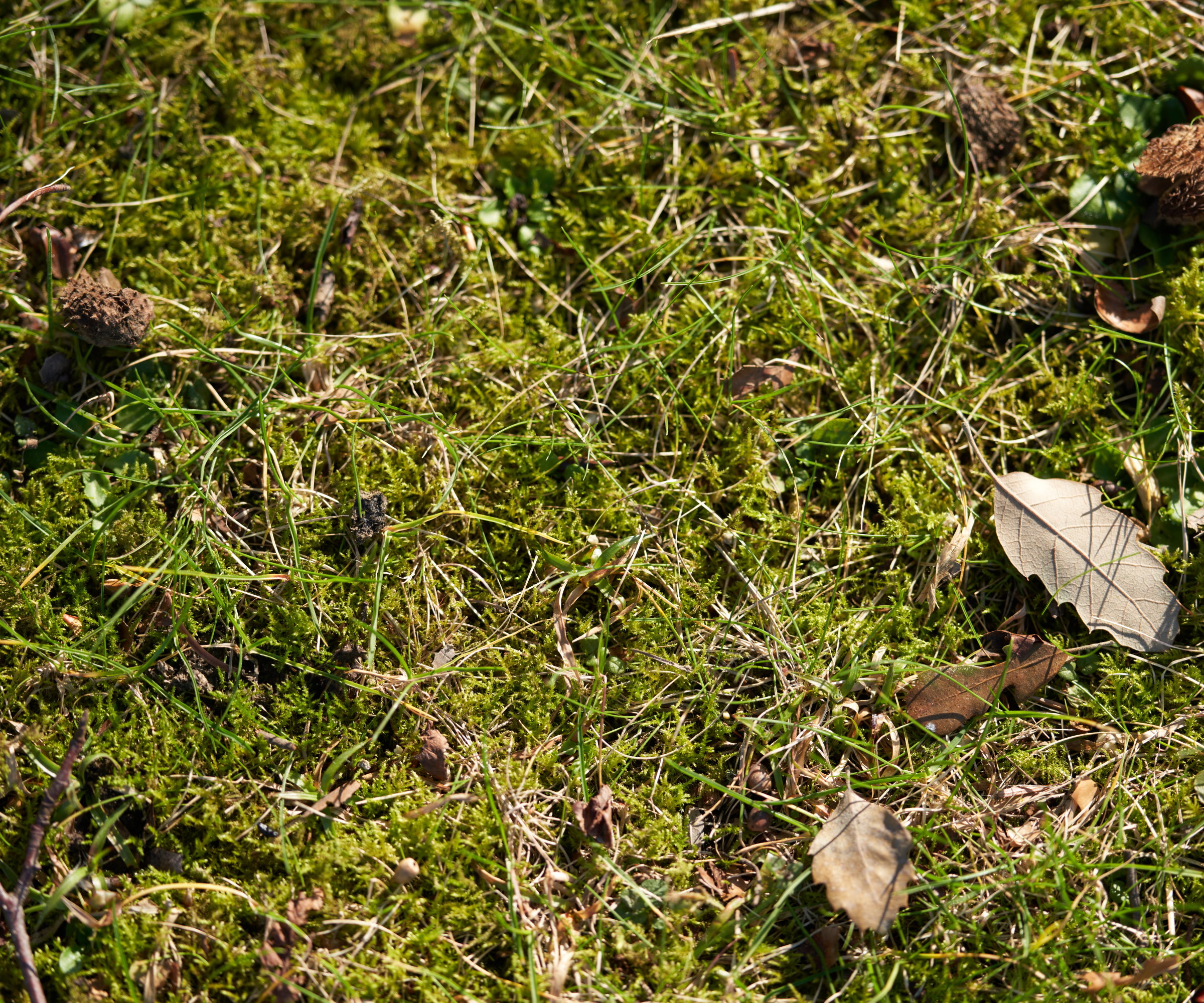
Moss can grow rampantly through a lawn
6 ways to tackle moss in your lawn
We share expert-approved methods for ensuring your grass is moss-free.
1. Deal with the shade
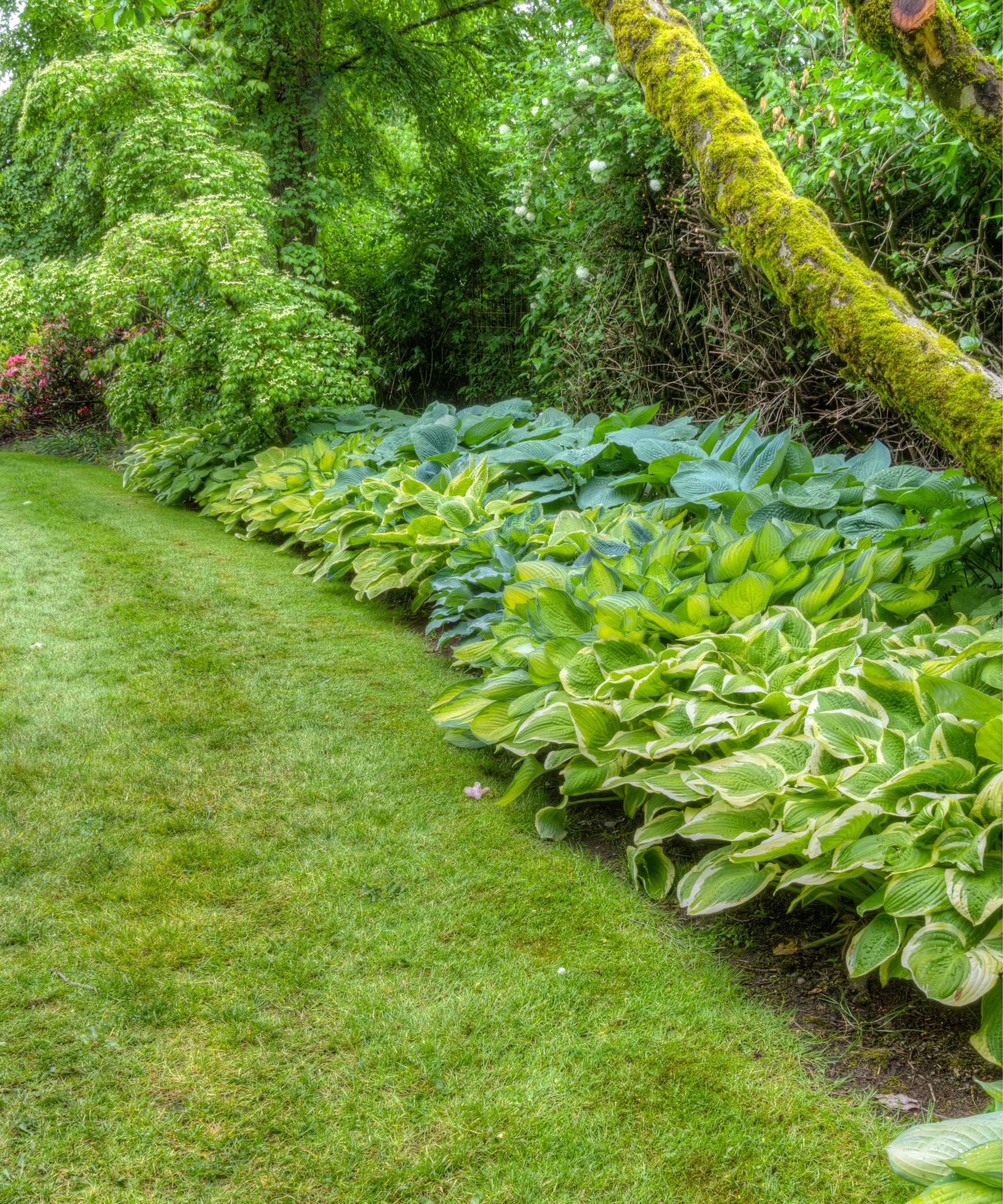
Some types of grass are better at growing in shaded areas than others
Moss tends to be a problem on lawns shaded for large parts of the day, and on lawns where drainage is poor due to compaction. The best thing to do is to find out why the moss is becoming established and change the prevailing conditions.
If shade is the problem, and this goes for getting rid of moss on a patio or removing moss on a roof, making moves to improve the light levels will reap rewards. This could be achieved by cutting back nearby hedges or trees.
Otherwise, it might be a good idea to re-seed these areas with seeds specifically designed for shade. These grasses will be more competitive with the moss and should win out.
Design expertise in your inbox – from inspiring decorating ideas and beautiful celebrity homes to practical gardening advice and shopping round-ups.
Examples include perennial ryegrass and red fescue, or you could plant a grass seed mixture that's specifically designed for shade.
2. Aerate and scarify
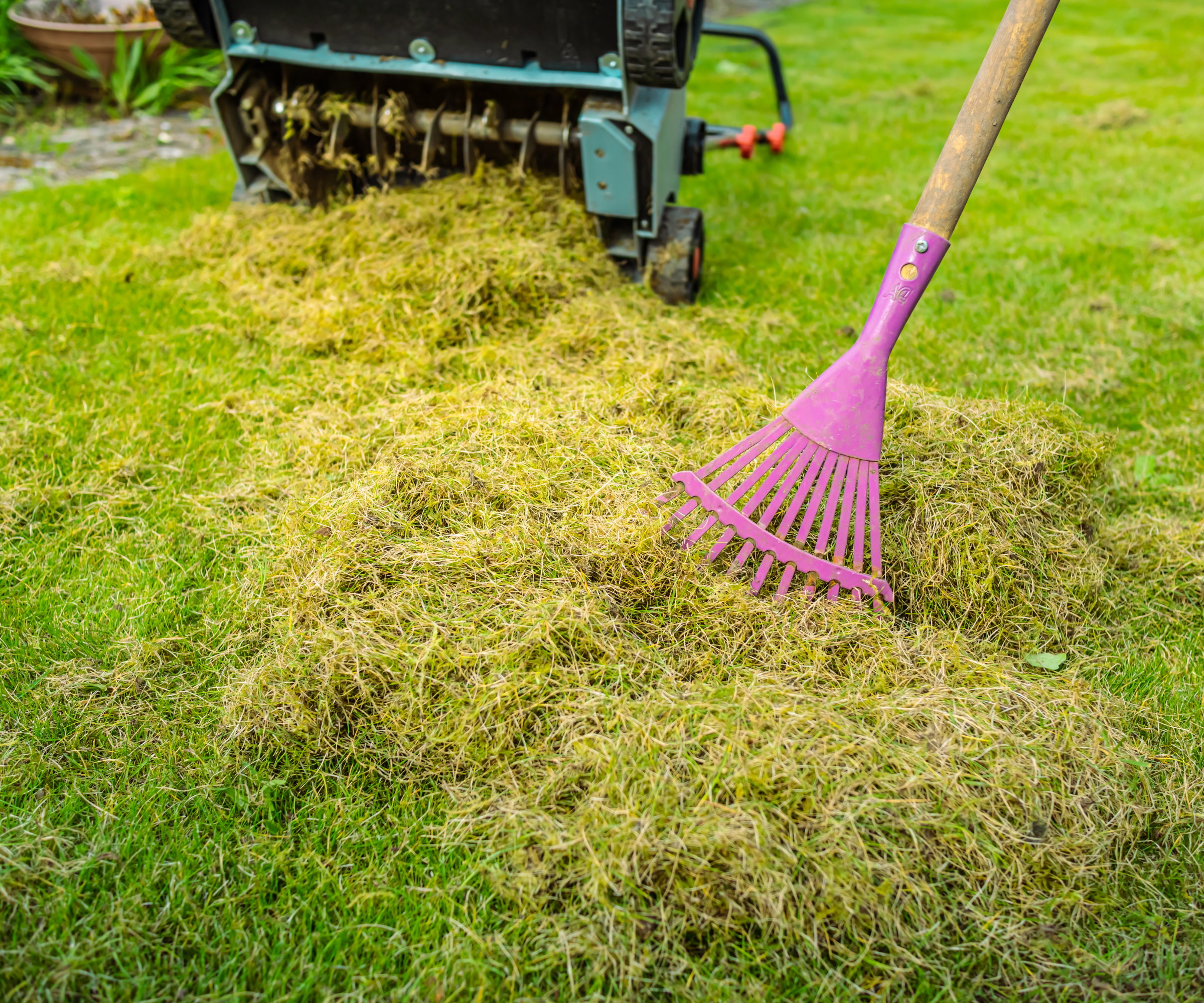
Scarifying is an essential part of lawn care
'If high moisture levels or poor aeration are the likely causes, there are several things you can do,' says Drew Swainston, content editor for H&G and former professional gardener.
'Late winter is a good time to aerate and scarify the lawn. Scarifying will help to remove dead plant material from the lawn, so the soil and grass can breathe more easily. Aerating the soil will relieve compaction, and allow more air to the grass root zone, all of which will discourage the moss and encourage the grass.'
This manual Gardzen aerator from Amazon is perfect for smaller plots. If you have a large lawn, it's probably worth hiring a mechanical aerator.
Afterwards, top dressing with good lawn topsoil may be enough to alleviate the conditions that are encouraging the mosses and you may not need to take any further action. However, it is always worth aerating on an annual basis.
Fertilizing your lawn in late winter will also benefit the grasses and encourage the strongest growth possible so they may start to out-compete the moss.

Drew qualified as a journalist and wrote for many websites and publications, before studying for a horticulture qualification. He worked as a professional gardener for several years, specializing in kitchen gardening. He's now bringing his expertise and passion to Homes & Gardens as a member of our team.
3. Use a moss killer
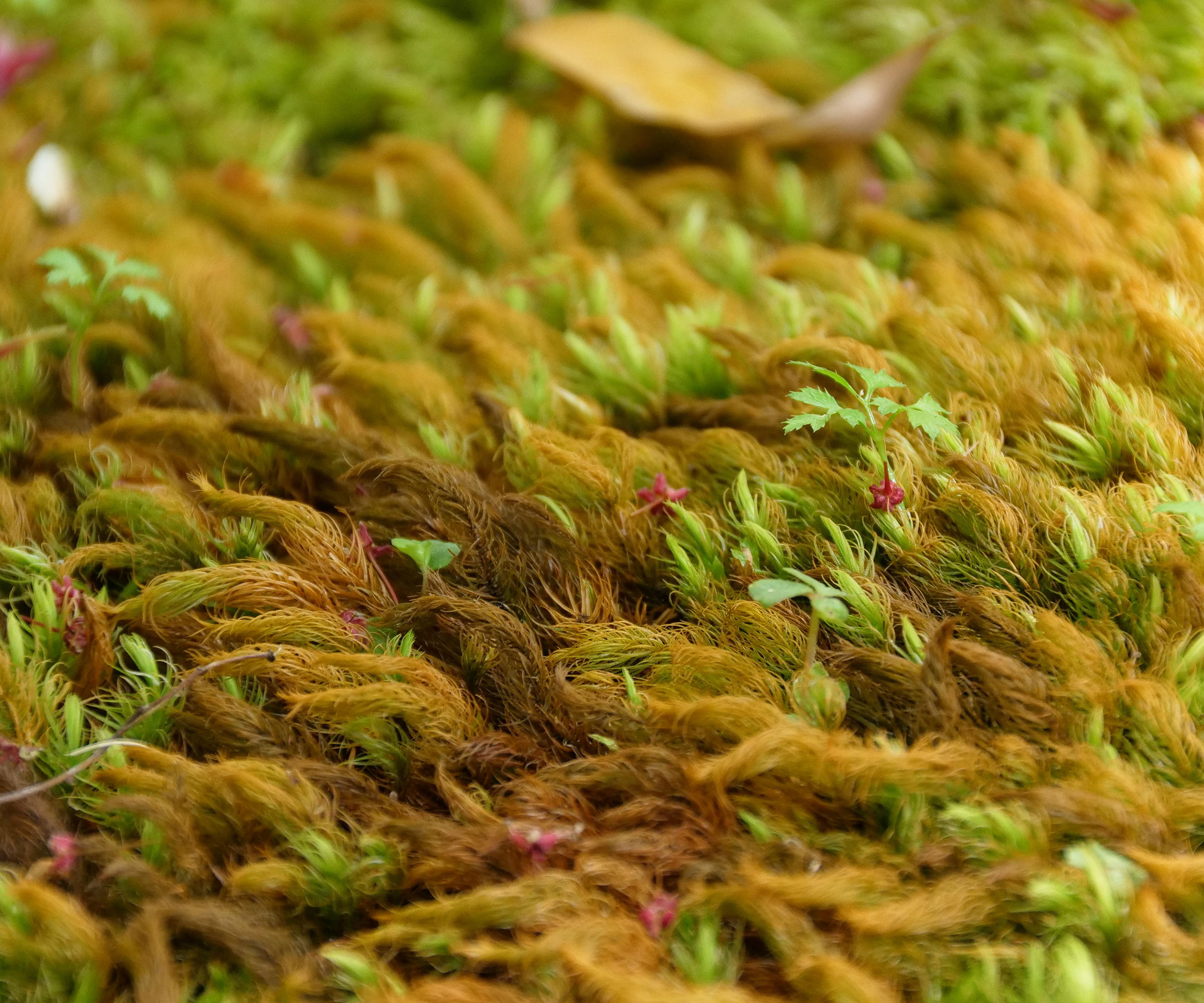
Moss killer can target troublesome patches
A chemical moss killer will give you a short-term fix, though it may look unsightly for a few weeks. Follow the packet instructions carefully to avoid damaging the grass. Some products require watering in after 48 hours.
'When the moss has blackened and died, rake it out and compost it,' says Ruth Hayes, contributing editor for H&G and gardening expert. When composting, it's best to mix it with other ingredients to help speed up the decomposition process.
'Once moss and weeds have been removed, and there are bare patches left in the lawn, you can overseed a lawn,' Ruth continues. 'You can re-sow in spring as long as you watch for weeds and keep the areas irrigated for two or three days afterwards if there is little or no rain. Early fall is also a good time for this as the coming weather is cooler and damper.' If the area is shaded, opt for a shade-tolerant grass seed mix, as we have highlighted below.

Ruth is horticulturally trained and has qualifications from the Royal Horticultural Society. She spends her days writing about and photographing key gardening jobs, and has a wealth of knowledge on lawn care.
4. Create a DIY solution with soap
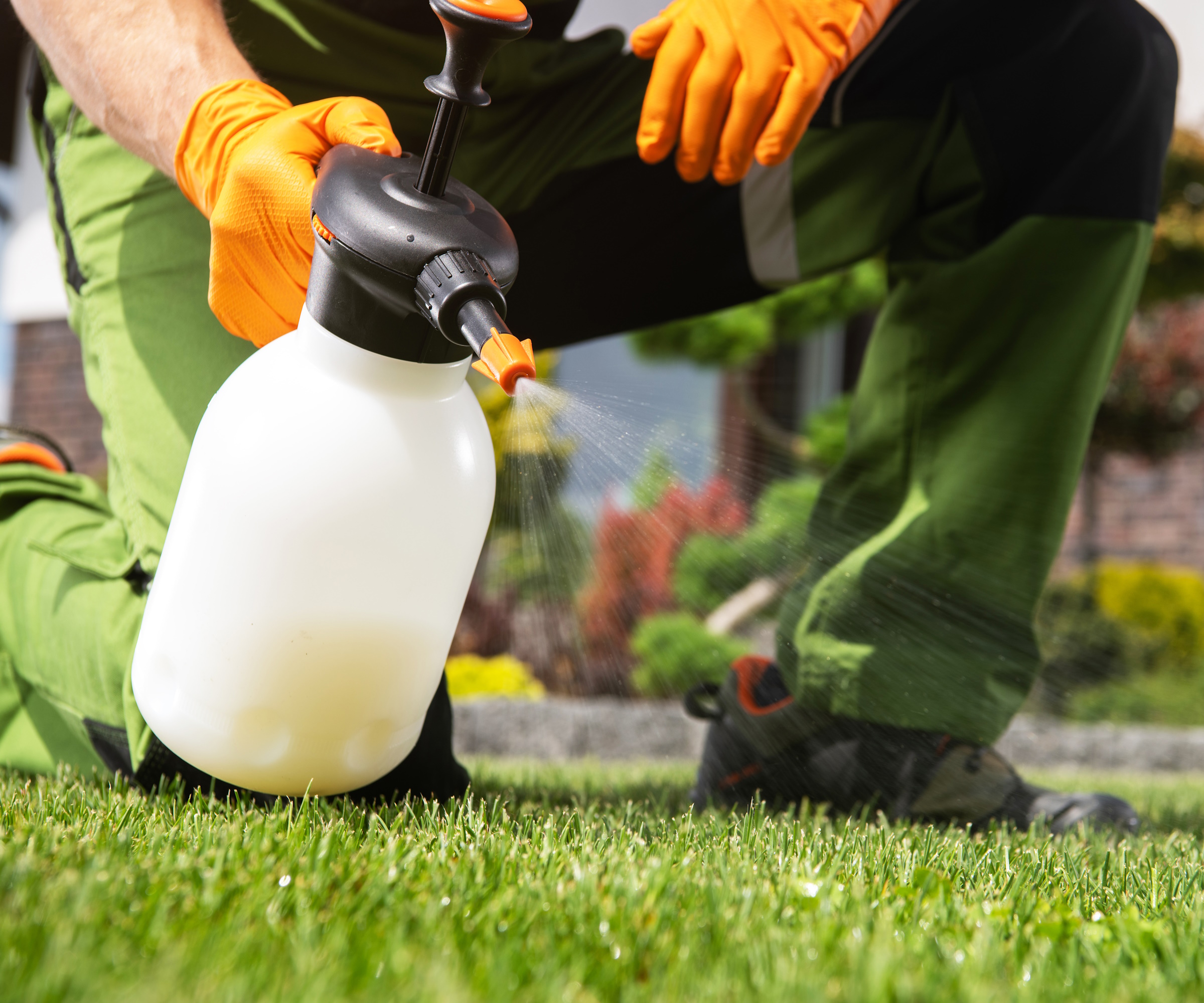
Dish soap can be an easy and inexpensive solution to moss on lawns
Alternatively, some experts advise using dish soap to kill moss.
Drench the affected area with a solution of dish soap diluted with water. Use a plastic spray bottle for the mixture so you can get up close and angle it accurately. The moss will turn brown and dry after a couple of days, then you can simply rake it out.
This solution uses an ingredient you're already likely to have in your kitchen, and it can be an inexpensive solution that will eliminate the problem in only one day.
For another DIY solution, you can use baking soda. The formula is similar: two gallons of water for a small box.
5. Check and improve drainage on your lawn
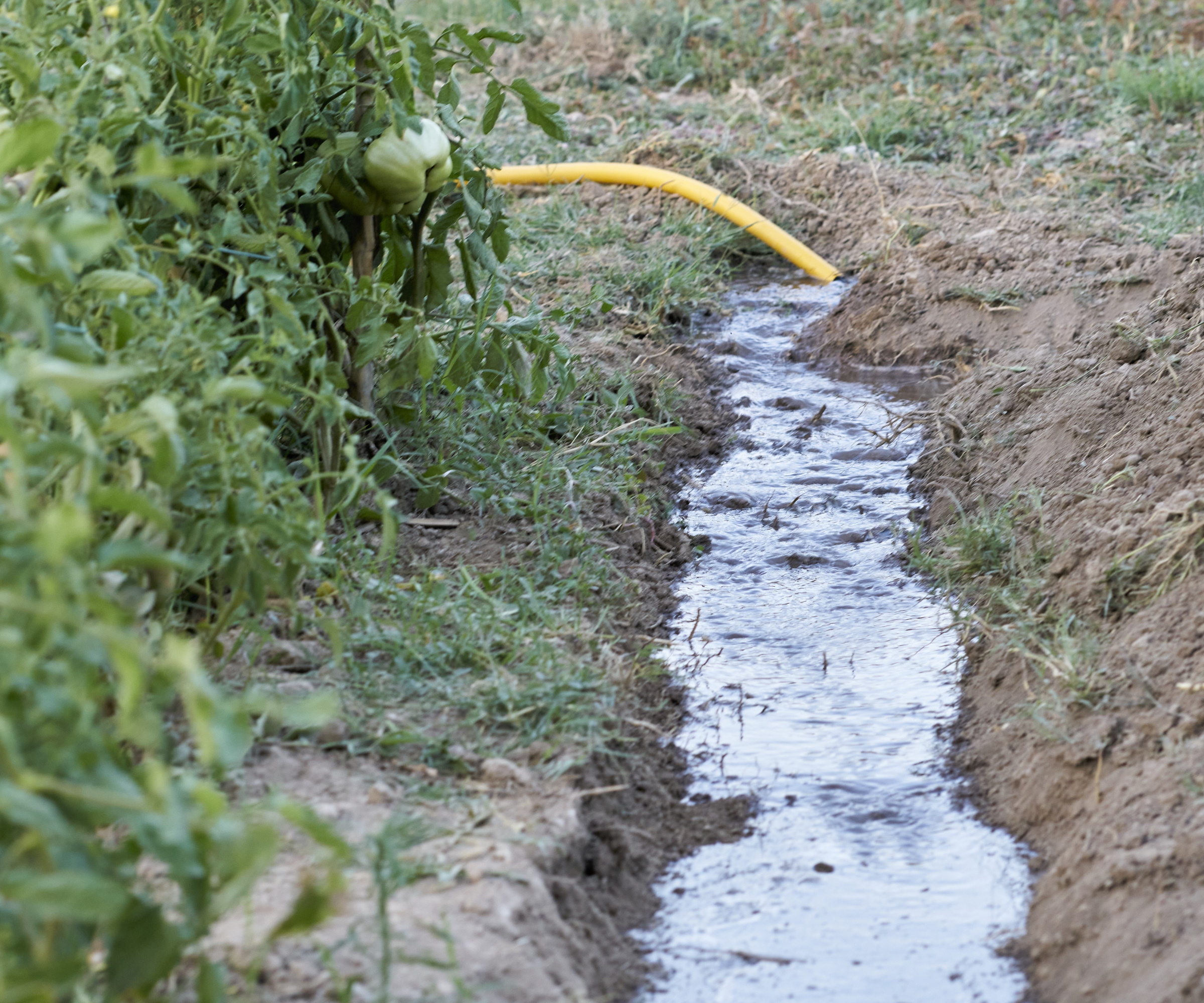
A French drain can help with heavy clay soil
Moss thrives in damp, poorly drained areas. If you are able to enhance soil drainage by aerating an overly compacted lawn, incorporating organic matter such as compost, or addressing any grading issues that contribute to water pooling, this could help to stop moss from growing.
If your soil is heavy clay, preventing water from percolating quickly, one solution might be to incorporate a French drain in your backyard design. This helps with very dense soil, helping to redirect excess water by draining it from one badly affected area of the yard to another less-saturated area.
6. Check the quality of your soil
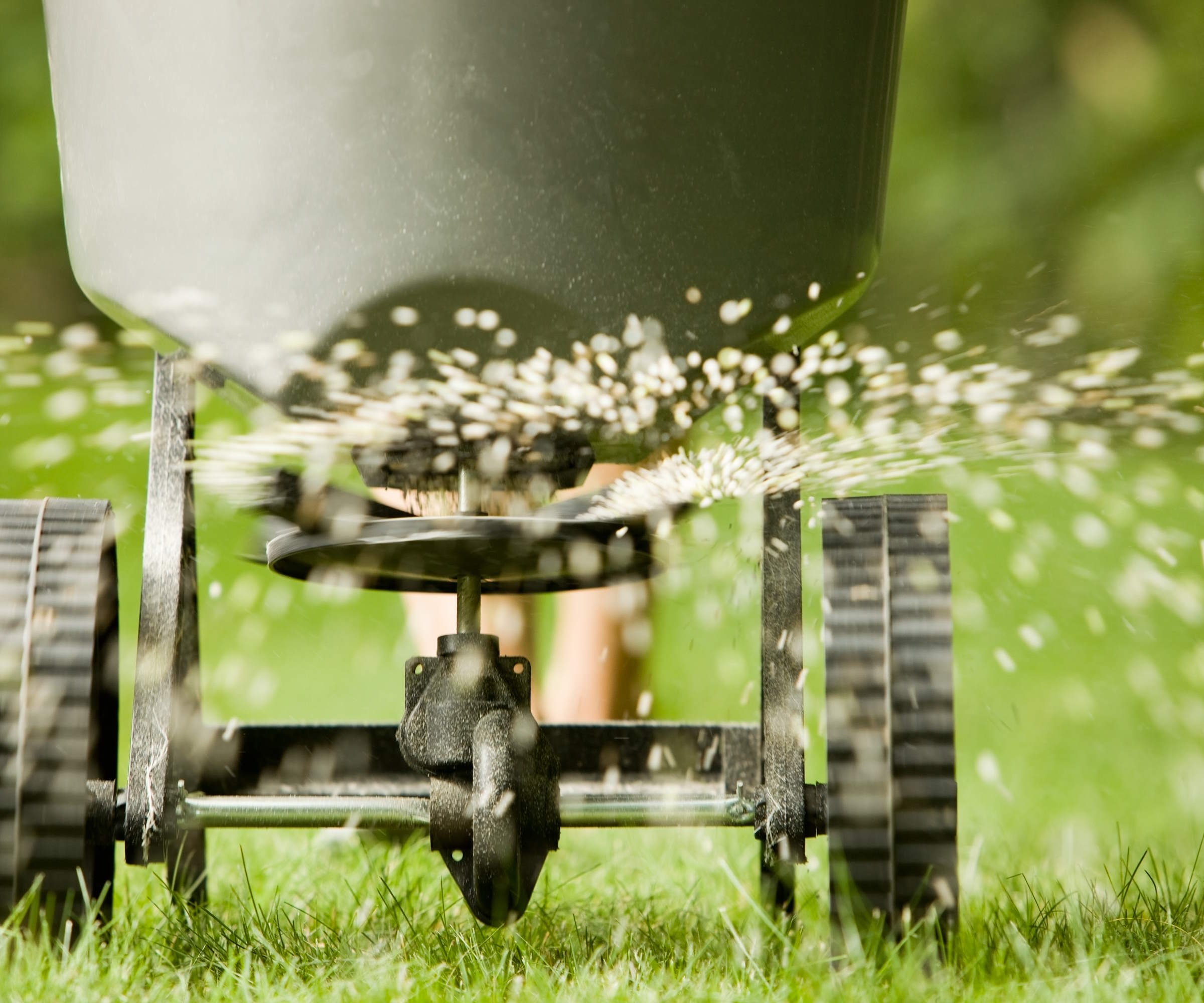
Feeding a lawn can help grass thrive to out-compete moss
Soil health is vital in getting plants to thrive, and grass is no different. If you have poor soil that is lacking in nutrients, this may be a reason why you have lots of moss growing on your lawn.
Moss tends to grow more on acidic soil, which lawn turf doesn't usually perform well on. You can test the pH of your soil using a soil test kit, such as this one from Amazon, and apply lime if necessary to raise the pH level. Regular soil testing can help you monitor and maintain the optimal pH and nutrient level over time and will indicate whether you need to boost your soil nutrients using a lawn-suitable fertilizer.
Shop essential kit for removing moss from lawns
FAQs
Do you have to get rid of moss in lawns?
An immaculate stretch of verdant turf is a goal for many gardeners. But there are some benefits to letting moss grow, which are easily overlooked.
In areas where grass is tricky to establish, moss provides a green, soft and spongey alternative that looks much better than a patchy lawn – and stays looking good year-round. It can be embraced as a landscaping choice – it's a popular option for Japanese-style gardens, for instance.
What's more, it doesn't require mowing, and is less demanding when it comes to water, cutting down your maintenance time. And, it's good for wildlife gardens, too.
How should you deal with moss in lawns in winter?
Winter is tough on lawns, and moss can easily spread into well-trodden areas where the grass has stopped growing. It’s best to simply leave it, however, and deal with it in spring. Otherwise, you may damage the lawn further by walking on it as you treat it, especially in wet or frozen conditions.
By implementing proper spring lawn care practices such as regular mowing, appropriate watering, fertilization, and overseeding where necessary, you can help to stop moss from becoming a problem and maintain a vibrant, healthy lawn all summer long.

Holly started writing about gardening five years ago, and she is a regular contributor to Homes & Gardens. She has also written many gardening features for Woman & Home and Real Homes, too. She has previous experience as a professional gardener, where she helped to plant and maintain private gardens. Holly has also looked after allotment plots over the years and loves to grow her own flowers and veggies from seed. In her spare time, she enjoys visiting local gardens, botanical drawing, and tending to her ever-growing collection of houseplants.
- Rachel BullHead of Gardens


